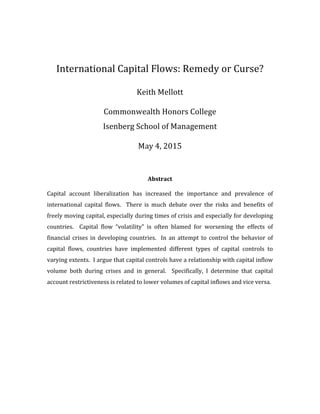This document discusses the growth of international capital flows over the past 50 years and debates around the risks and benefits of freely moving capital. It notes that the collapse of the Soviet Union in 1991 and subsequent liberalization policies in post-Soviet states led to increased foreign direct investment inflows to those countries as they sought to attract outside investors. The end of communist regimes in other parts of the world, like Latin America, also led countries there to abandon communism and liberalize their trade policies and open their borders to foreign capital. Overall, political changes and liberalization efforts have contributed significantly to the rapid growth of international capital flows globally since the 1990s.










































